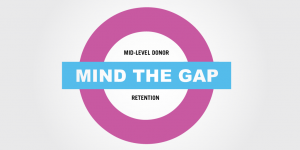Your work isn’t done once you’ve thought through your capital campaign’s strategic message and developed a brand that communicates what your capital campaign is all about. You still need to use these elements to create a compelling case for support that explains why this initiative is so important!
Traditionally, when fundraisers think about a capital campaign case for support or case statement, we visualize a document that explains why someone should support a campaign.
But a case statement is not a one-and-done exercise! You can get more mileage from your case for support by adapting it throughout your campaign.
After all, your case for support should be the answer to the question, “Can you tell me a little more about your capital campaign?” And you won’t stop hearing this question when you move from the quiet to the public phase!
The classic case statement.
We’re not reinventing the wheel here, just improving on it. So, your traditional case for support will still be an important part of your capital campaign communications.
You will use your strategic message and campaign brand to shape the look and feel of this brochure.
This makes it a great place to pull content and ideas from when you build additional touches into your campaign. Your case for support should make your campaign’s purpose and goals more tangible for high-level campaign donors during the quiet phase.
It will help transform your list of needs into messages explaining why this campaign is so important and how supporters can make an impact. And it should feature key information about the details of your campaign, as well as full-page photo spreads that appeal to your audience’s emotions.
This first version of your case for support will help you get buy in from key stakeholders and secure those leading donations during the quiet phase of your campaign. It will be the central piece of a leave-behind kit that donors can revisit after you meet with them in person.
READ MORE: Building a strategic plan for your next capital campaign.

The public phase pamphlet.
As you transition from the quiet phase to the public phase, you will need to evolve your case for support.
So, you will need to adjust your messaging and the way you present your case as your primary audience shifts from targeted high-level contributors to a broader group of potential donors. This involves transitioning the major donor brochure you developed for the quiet phase into a cost-effective, mass-produced piece that speaks to a more general audience.
Your public phase pamphlet should highlight your campaign’s key elements and goals and point people to where they can donate or get more information.
And don’t forget to let your supporters know how much progress you’ve already made towards your goal! Then, focus on letting them know how they can join others in making the vision behind your campaign a reality.

The living brochure.
In-person conversations and pamphlets shouldn’t be the only way potential supporters can learn about your capital campaign.
You built an entire brand to help differentiate your capital campaign communications from your regular outreach materials.
So, don’t just add information about your capital campaign to your regular donation page or create a separate tab on your main website. Doing so can cause your capital campaign to compete for a donor’s attention with your annual fund and other initiatives.
A separate campaign microsite serves as a living case for a support brochure. There are five essential pages you will want to include.
READ MORE: Let’s freshen up your online donation page.
1. Home page.
Your homepage should contain essential information about the campaign in a scaled-down, focused design. Don’t overload visitors with details as soon as they arrive.
This page should encourage users to learn more about your campaign and why they should help.
So, make sure it’s easy for users to move from this page through the rest of your microsite. The next step should be to go to your campaign’s donation page.
2. Campaign goals.
Create a designated page to talk about what your campaign is trying to achieve. Yes, this can include a breakdown of your campaign’s financial goals. But that shouldn’t be your focus.
This page should help connect the dots for donors.
It should explain how achieving this campaign’s goals will advance your organization’s mission. This is your chance to go a little more in-depth about what you’re trying to accomplish and how. Remember, your homepage will handle the why!

3. Leadership information.
This page showcases a campaign’s committee members and other individuals spearheading the initiative.
It also gives you a chance to be donor-centric and highlight some of the key supporters who are bringing your vision to life.
Your brand will do a good job of communicating what this campaign is all about. But sometimes, we still like to put a face to the name. And seeing the real people who wanted to bring the vision behind the campaign to life can inspire others to get involved, too!
4. Campaign progress.
This page should feature a visual tool like a progress bar so donors can get a better picture of how the campaign is going. Having a visual representation makes an obscure number feel less abstract when talking about millions of dollars.
You can also report on metrics like the percentage you’ve raised towards your goal or how many total donors have participated in the campaign so far. This creates a more inclusive environment for giving.
After all, it’s not really about the money. It’s about how your donors are making a difference!
5. Donation page.
You probably won’t secure that campaign changing gift from someone who stumbles across your campaign’s microsite. But you should give donors who want to give something online the option to do so.
So, make sure your giving page is easy to use and accepts multiple forms of payment.
And include a separate “contact us” form for donors who want to learn more about your organization or the campaign. These people could be interested in making a larger gift after learning more. Make sure you follow up on all requests for more information.
You can make changes to this page as you move through the phases of your capital campaign. Use it to let donors know who to contact if they want to get involved during the quiet phase. Or hold off publishing the donation page until after the official public launch.
Keep your case for support current.
Unlike your print materials, you can update your campaign microsite anytime to keep up with your progress. So, make sure you update your site as you move through the campaign phases and adapt your case for support accordingly.
As you know, effective fundraising outreach is about engaging the right donor with the right message at the right time. And your capital campaign communications are no exception.
So, make sure your campaign’s case for support is accurate and engaging for every donor every step of the way!
Check out this eBook for more ways to amplifi your next capital campaign!









